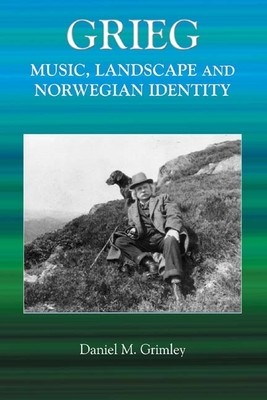
- We will send in 10–14 business days.
- Author: Daniel Grimley
- Publisher: Boydell Press
- ISBN-10: 1843832100
- ISBN-13: 9781843832102
- Format: 16.4 x 24 x 2.2 cm, hardcover
- Language: English
- SAVE -10% with code: EXTRA
Reviews
Description
An examination of the role of landscape and cultural identity in the music of Edvard Grieg.
While Grieg's music continues to enjoy a prominent place in the concert hall and recording catalogues, it has yet to attract sustained analytical attention in Anglo-American scholarship. Daniel Grimley examines the role which music and landscape played in the formation of Norwegian cultural identity in the nineteenth century, and the function that landscape has performed in Grieg's work. It presents new perspectives on the relationships between music, landscape and identity. This tension between competing musical discourses - the folklorist, the nationalist and the modernist - offers one of the most vivid narratives in late-nineteenth and early-twentieth-century music, and suggests that Grieg is a more complex and challenging historical figure than his critical reception has often appeared to suggest. It is through the contested category of landscape, this book argues, that these tensions can be contextualised and ultimately resolved.EXTRA 10 % discount with code: EXTRA
The promotion ends in 18d.22:01:49
The discount code is valid when purchasing from 10 €. Discounts do not stack.
- Author: Daniel Grimley
- Publisher: Boydell Press
- ISBN-10: 1843832100
- ISBN-13: 9781843832102
- Format: 16.4 x 24 x 2.2 cm, hardcover
- Language: English English
An examination of the role of landscape and cultural identity in the music of Edvard Grieg.
While Grieg's music continues to enjoy a prominent place in the concert hall and recording catalogues, it has yet to attract sustained analytical attention in Anglo-American scholarship. Daniel Grimley examines the role which music and landscape played in the formation of Norwegian cultural identity in the nineteenth century, and the function that landscape has performed in Grieg's work. It presents new perspectives on the relationships between music, landscape and identity. This tension between competing musical discourses - the folklorist, the nationalist and the modernist - offers one of the most vivid narratives in late-nineteenth and early-twentieth-century music, and suggests that Grieg is a more complex and challenging historical figure than his critical reception has often appeared to suggest. It is through the contested category of landscape, this book argues, that these tensions can be contextualised and ultimately resolved.

Reviews